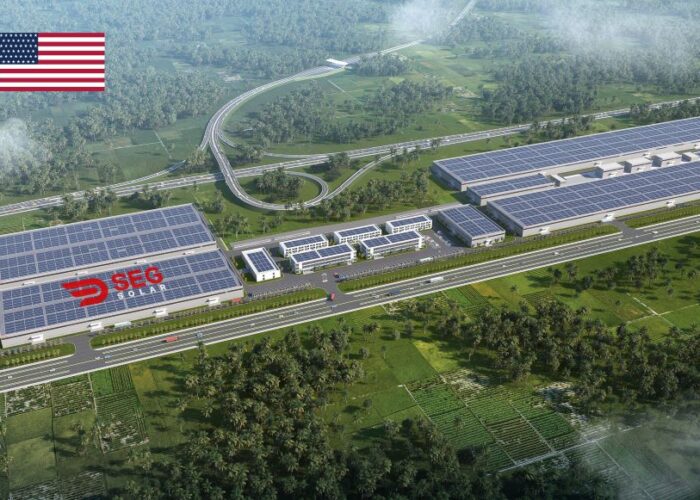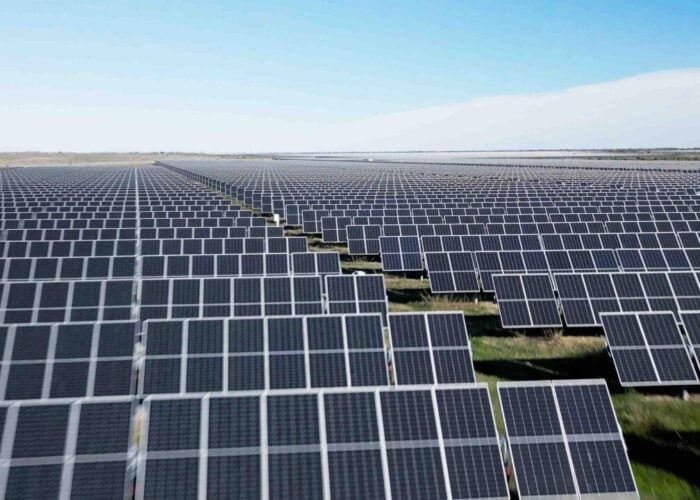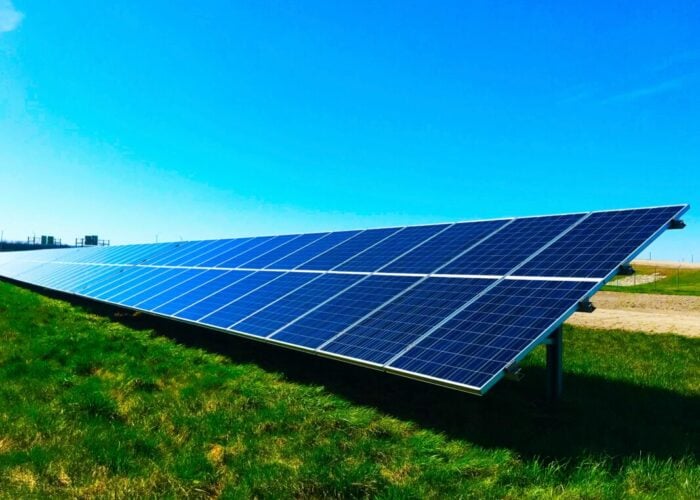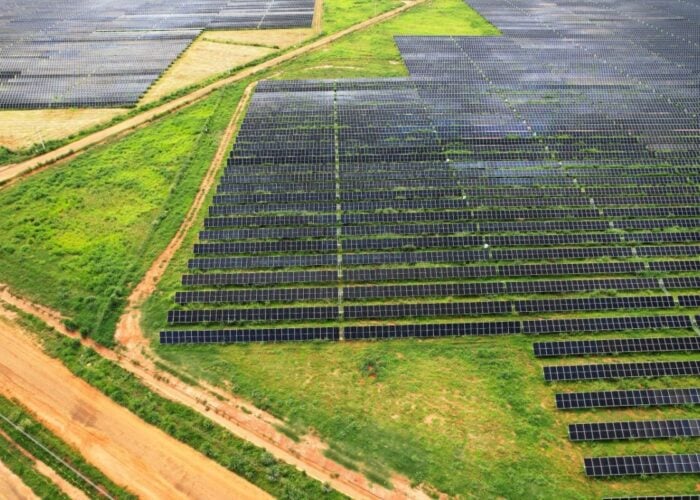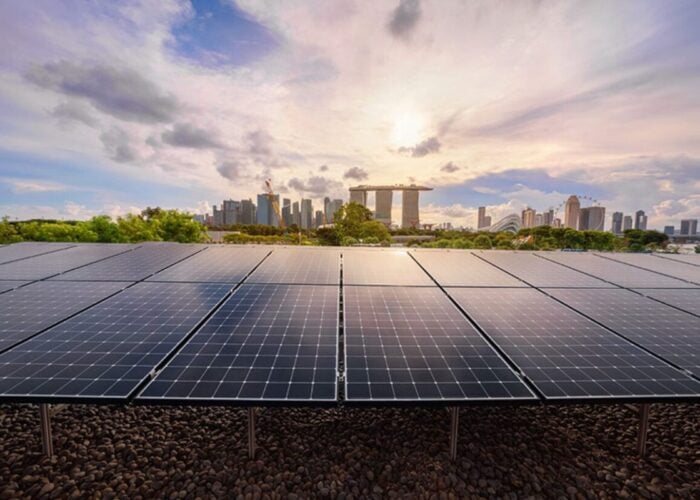Two important reports – one released last month and the other to be released imminently – are really giving the US solar industry something to think about as 2013 approaches.
In Tracking the Sun, researchers from Lawrence Berkeley National Laboratory last month published their annual historical summary of the installed price of PV in the US from 1998 to 2011.
Try Premium for just $1
- Full premium access for the first month at only $1
- Converts to an annual rate after 30 days unless cancelled
- Cancel anytime during the trial period
Premium Benefits
- Expert industry analysis and interviews
- Digital access to PV Tech Power journal
- Exclusive event discounts
Or get the full Premium subscription right away
Or continue reading this article for free
The analysis is based on data from more than 150,000 systems representing around 3,000MW, or 76% of all grid-connected PV capacity installed in the United States through 2011. But there is much more growth potential to come, hints the report.
“In 2011, approximately 21,000MW of grid-connected PV were installed globally, up from roughly 17,000MW in 2010, and 8,000 MW in 2009,” the report notes. “With roughly 1,850MW of grid-connected PV capacity added in 2011, the United States was the world’s fourth largest PV market in that year, behind Germany, Italy and China. Despite the significant year-on-year growth, however, the share of global and US electricity supply met with PV remains relatively small.”
Most of the findings in the report won't come as too much of a surprise to most folk in the industry. The report collects data from 42 rebate or incentive programmes across the country and backs anecdotal evidence of price declines with solid research.
“There weren't any major surprises,” said Galen Barbose, one of the report's authors. “Many of the findings that we see here are things that we've been hearing about anecdotally. The purpose of this report is to definitively put some numbers on the trends that people know are happening at a qualitative level.
“But there is tremendous variability across systems in pricing. One has to be fairly careful and specific when talking about what is the price of PV in the US. It depends on system sizes, the location, all sorts of technological characteristics and the kinds of equipment being used.”
Key findings from the LBNL researchers included a $0.7/W (11%) reduction in the median installed price in 2011 for residential and commercial systems of less than 100kW.
Partial data for the first half of 2012 suggest installed prices have continued to fall, with the median installed price of projects funded through the California Solar Initiative declining by an additional $0.2/W to $0.4/W. A $0.3/W drop in panel spot prices from January to September 2012 assisted this decrease, but these costs aren't always passed through.
“Movements in global module prices, however, do not necessarily translate into an immediate, commensurate change in the price paid by the system owner; in some cases, system prices may lag changes in module prices,” the report observes.
Decreases in installed costs were also seen in utility-scale PV projects ranging from 2MW to 35MW. Average installed prices declined from $6.2/W for projects between 2004-2008 and to $3.4/W for projects installed in 2011.
Economies of scale seemed to apply consistently within the utility sector. Installed prices for projects larger than 10 MW ranged from $2.8/W to $3.5/W compared with $3.5/W and $5.0/W for projects smaller than 10MW.
But economies of scale don't seem to apply in the same way in the residential and commercial sectors, the report found.
“You can see how the economies of scale evolved as a system size increases. Across the whole spectrum of system sizes as you get larger system sizes, the installed price goes down, but the biggest impacts are at the relatively small end of the system size spectrum.
“Once you get down to 10kW things decline in price relatively slowly from that point on.”
The report's authors also found that the installed price of small residential PV in the US is higher than in other countries, particularly in Germany where systems of less than 10kW cost $3.4/W versus $5.8/W in the US.
Driving down non-module costs
‘Soft’ costs, ie permitting, inspection and interconnection (PII) are a large part of the reason why the solar industry is still a long shot from the government's SunShot target of $1/w installed costs – even as panel costs fall to $1.14/W in 2012, according to Kristen Ardani at the National Renewable Energy Laboratories.
The results of Ardani's work on benchmarking soft costs for PV systems in the US are due to be published soon. But there are some revealing data points that won't always make comfortable reading for the solar industry.
The problem is that PII standards are so inconsistent in the US, with more than 18,000 jurisdictions with different permitting requirements, she says. There are also more than 5,000 utilities with different interconnection standards.
Ardani has also found that permitting fees vary widely across the US – for example typical permit fees for a 5kW system are $200-$450 per install and even as high as $2,000. This typically adds from $0.15/W to $0.5/W to system costs.
Curiously, economies of scale do not apply at all when it comes to PII costs, she says.
“One would think that higher volume installers that install 1500-plus systems a year would have considerably less labour hours per install to complete this process. But what we are seeing is a constant [cost] irrespective of volume suggesting that the install labour hours may be more dependent on jurisdictional factors than economies of scale.”
Differences in soft costs between the US and Germany are in the region of $2 because of a more streamlined permitting process, she says.
“In the US, we do have some highlights for best practices for permitting and interconnection. Vermont and Santa Clara have over-the-counter permits and make it very easy for installers. But because each jurisdiction is so different and there is such variation.”
A database that hosts all the different requirements has the potential to be a huge time saving measure, she says: “If you at least knew what you were responsible for, even if it was more paperwork overall, you would be able to reduce your time, energy and money.”
With funding from the Department of Energy's Sunshot Initiative, Clean Power Finance is developing a country-wide beta permitting database that will disclose different requirements across jurisdictions.
“Fee structures are something else that could be relatively simple,” says Ardani. “Something like a flat fee based on system size or commensurate with the time the permit office spends on them [would be useful]. But a lot of times, fees from the outside seem arbitrary. If we had political activity or grassroots action to bring that to light that would help.”
No one is holding their breath at a push for consistency at the federal levels. But policymakers must act decisively to leverage the advantages of low panel prices, and limit opportunities for local authorities or even installers to leverage more profit than would be fair from those falling prices. Transparency and data are vital tools.
“What we've seen over the past few years is that installed price reductions have really been driven primarily by falling module prices,” says Barbose. “Those falling module prices are a function of global supply/demand issues and a global oversupply of module manufacturing capacity that has forced prices down.
“That dynamic is not one that can persist indefinitely. Really we're getting to the point where it's not going to be possible to squeeze much more of a price reduction out on the module side. For further price reductions to occur at the system level, that's going to have to come from the non-module side and achieving non module cost reductions that involves reducing the business process costs.
“Policymakers need to start thinking at this point of how to structure their support mechanisms so that they can most effectively drive those particular costs down.”


